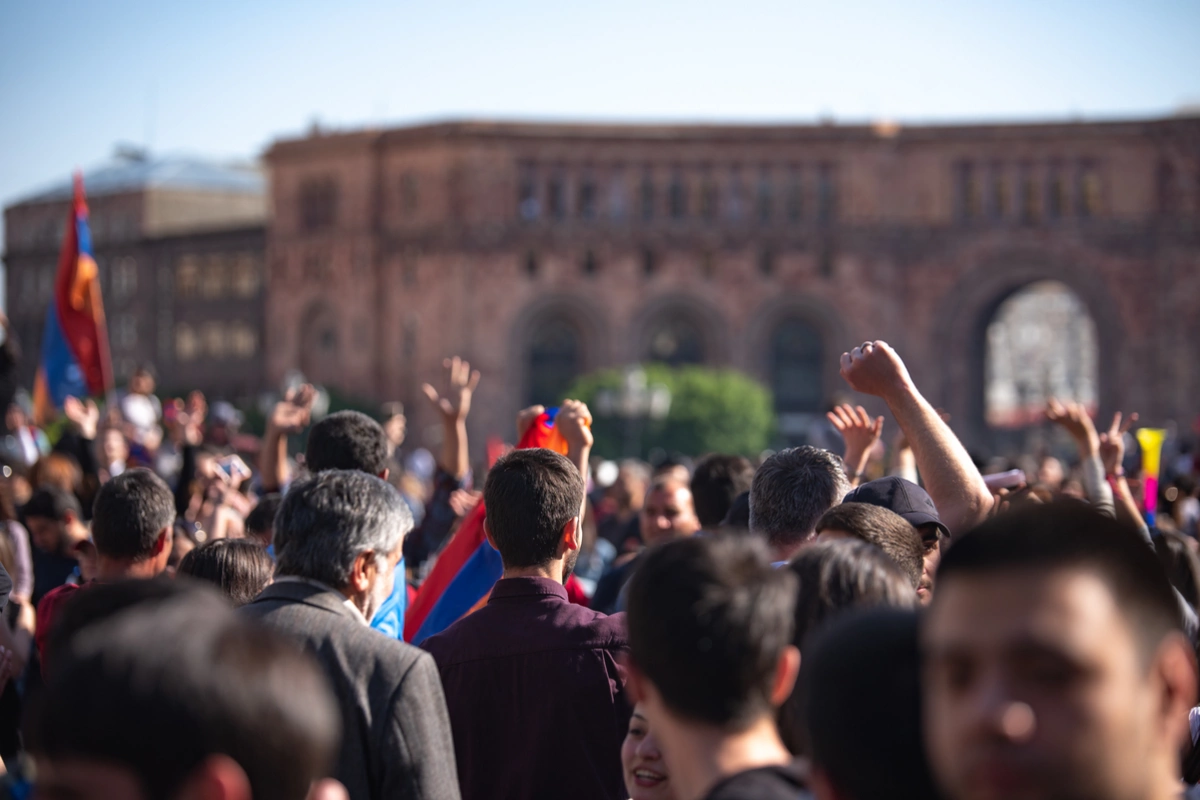
Despite protests in Yerevan, the process of normalizing relations between Armenia and Azerbaijan continues unabated. Since the first opposition rally held on 9 May, the number of people participating in street actions has declined while the international community has welcomed meetings between the two sides.
Image: Evgenia Parajanian/Shutterstock
On 10 May, the Armenian and Azerbaijan foreign ministers, Ararat Mirzoyan and Jeyhun Bayramov, met for two days of bilateral talks in Almaty, Kazakhstan. Aside from the symbolic nature of the location, with the meeting being held in the House of Friendship—the same building where the Alma-Ata Declaration was signed in 1991—little more is known about the meeting other than that they will continue.
However, while the international community welcomed the latest round of talks, others weren't so enthusiastic. The following day, the Primate of the Tavush Diocese of the Armenian Apostolic Church, Bagrat Galstanyan, gathered thousands in Yerevan to oppose the associated process of border delimitation and demarcation. According to the Union of Informed Citizens (UIC), around 31,700 participated.
Many in attendance were disappointed that the subject of the border was not mentioned, as Galstanyan instead called for Armenian Prime Minister Nikol Pashinyan’s resignation. A second rally attracted only 11,300, and a third attracted just 9,400.
Despite the apparent waning of the Tavush for the Motherland movement, Galstanyan also directed his supporters to continue in their campaign of civil disobedience, disrupting traffic and blocking roads in the capital and major highways leading to Georgia and Iran. Meanwhile, the opposition still plans to initiate impeachment proceedings against Pashinyan.
However, with just 35 deputies in parliament, the opposition still lacks the 36 necessary to table such a motion, so it looks unlikely to succeed. Another 18 deputies would then be required to pass it in a parliament where Pashinyan’s party holds the majority.
The opposition Armenian Revolutionary Federation Dashnaktsutyun (ARF-D) and the Republican Party would also need to nominate their own candidate for prime minister, a position chosen by parliament rather than the electorate. Given the disparate nature of the parties supporting Galstanyan, finding a candidate acceptable to all will be difficult.
Vartan Oskanyan, the former foreign minister under Robert Kocharyan, continues to push for Galstanyan’s candidacy, raising questions about the separation of church and state in Armenia. The cleric, however, also holds Canadian citizenship which was acquired as Primate of the Diocese of the Armenian Apostolic Church of Canada from 2003 until 2013 and is thus ineligible.
Though Pashinyan’s ratings continue to drop, with a current survey showing last week that only 12.8 percent would vote for Pashinyan’s Civil Contract party if elections were held that weekend, the opposition continues to remain even less popular. Despite being unable to run, Archbishop Galstanyan was, for the first time, included and polled 3.9 percent, slightly above Robert Kocharyan. Over 50 percent said the question was difficult to answer or refused to do so.
Further, if the opposition were to remove Pashinyan and form a new government, only 6.7 percent favoured Galstanyan as prime minister. Some 50 percent were against all of the main frontrunners, while 31 percent said it was difficult to answer. Just 9.3 percent supported the removal of the prime minister in a vote of no confidence, and only 38 percent approved of the blocking of roads.
Nevertheless, the civil disobedience continues, with Galstanyan attempting to disrupt a meeting of the European Bank for Reconstruction and Development (EBRD) in Yerevan on 15 May where Pashinyan was due to speak. This, he said, would demonstrate how the prime minister could no longer govern. Unaffected, Pashinyan spoke of how the agreement on the border could prove a precedent.
"The demarcation process between Armenia and Azerbaijan has started these days and should become one of the tools that will teach Armenia and Azerbaijan to live peacefully,” he said, echoing earlier remarks that the process could be considered a pilot, perhaps indicating that confidence building measures between the sides could be introduced in the future.
At a cabinet meeting the next day, Pashinyan called it a “great success.”
With Galstanyan’s movement failing to reach critical mass, strides toward normalization continue. On 16 May, the Speaker of the Armenian National Assembly Alen Simonyan met with his counterpart from the Azerbaijani Milli Majlis, Sahiba Gafarova, on the sidelines of an international event in Geneva. It was their second such meeting in two months.
The same day, in an unconnected event, Georgian Prime Minister Irakli Kobakhidze met with Turkish President Recep Tayyip Erdoğan in Ankara. Both welcomed the delimitation and demarcation of part of the Armenia-Azerbaijan border. “This marks a crucial step toward the eventual signing of a peace agreement between the two states,” Kobakhidze said alongside his Turkish counterpart.
Share on social media